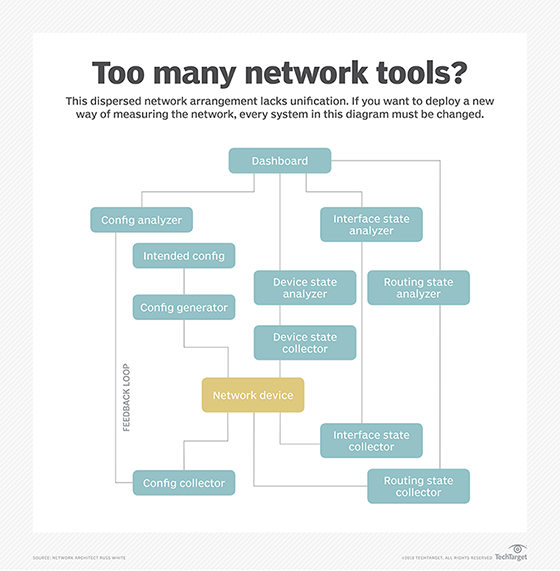
Konstantin Emelyanov - Fotolia
3 critical considerations for your network management strategy
The debate continues between the use of a single network management tool or a variety. Three considerations can help point your network management strategy in the right direction.
For three decades -- or as long as enterprise IP networks have been broadly deployed -- network administrators have argued about needing one or more network management tools. The consensus always turned out the same: One would be ideal, but practicality forces enterprises to have more. In this case, practicality in a network management strategy translates to ease of use, cost or function.
Ease of use is a critical consideration in the current IT environment, as the team's time and attention are at higher premiums than ever before. Network administrators and engineers want the ability to quickly set up or modify monitoring. They also want to easily get the information they need and have a tool that proactively alerts them about interesting changes in the environment.
If one network management tool is too hard to work with for important use cases, teams will run something that better meets their operational needs. Increasingly, those needs include the ability to use an API for managing the tool. For example, teams could use an API to configure the tool to appropriately monitor a new virtual machine or containerized application.
Cost is always a consideration in network management strategies, especially when debating the use of one management tool or multiple. Many deployments that use one tool for everything fail because a sudden surplus of new monitoring entities runs afoul of licensing cost structures. Tools that previously were great for monitoring physical workstations, servers and switches can sometimes become too expensive, due to virtualization, the profusion of end-user devices or the rise of containers. Open source tools are generally the bulwark against cost issues.
Functionality is also a recurring issue. Major monitoring platforms tend to evolve slower than monitoring needs. New commercial and open source tools pop up constantly, and IT teams deploy them. But even if a preferred tool evolves to meet the need in question, that target need could shift again, and something else could become an issue.

Network management strategy for the hybrid cloud
Enterprises are in the midst of multiple cloud migrations. They're also dealing with the resurgence of compute outside the data center, the explosion of IoT devices, the rising embrace of zero-trust models and the deployment of multiple software-defined networking services. Each of these can present problems around function, cost and ease of use for an organization's existing network management tools -- and drive the addition of a new tool to fill the gaps while older tools catch up.
IT teams should expect to use many management services, but they can take these concrete steps to make the best of the situation and build a solid network management strategy:
- Establish a firm policy. Network teams can only add network management tools for one of the three reasons noted above -- ease of use, cost or functionality. Personal preference is not enough, and professional history is not enough.
- Replace tools. Whenever possible, replace at least one tool when adding another so the set of tools doesn't grow. Focus on unitaskers, which are tools that monitor a single type of entity or traffic.
- Evaluate a manager of managers. IT teams can assign a manager of managers above the other tools as a single device for alerts and a single dashboard to drill into point services. Nemertes Research's benchmark research study of network management tools found solid benefits to having a manager of managers, including an improvement in mean times to identify and resolve problems. Newer generations of AI-powered services can further improve that mean time.








